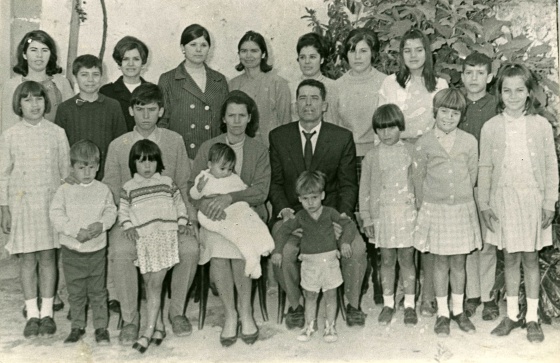Newborns have reduced from 665,000 a year – 1960’s – to 380,000 in the 90s and after……….
The Ojeda Artiles family was awarded the National Birth Prize in 1969 when leader Francisco Franco handed out a “National Birth Prize” to couples with the largest families. “Official media” at the time featured many stories on this.
The three categories covered at that time were: firstly for the most babies born into a single family; secondly to the family with the most surviving children (a testament to the high infant mortality rates at the time); and thirdly for the couple with the largest number of descendants still living at home.
Third prize went in 1972 to Julián Amor Gómez, a 48-year-old blue-collar worker from Lagartera, Toledo province, who was married to Pilar Iglesias Arroyo, according to the daily ABC. “They have 18 children who are still alive and all live under the same roof,” the newspaper reported at the time.We are witnessing a rapid decline in births and it seems that nobody cares”
Demographic policies have been absent in Spain throughout the years. A recent study of more than 38 million births between 1941 and 2010 reflects the consequences of the lack of such policies.
As pediatrician Jesús María Andrés, who authored the study, puts it: Spain has been suffering from an “incredible” decline in birth rates.
Figures from the National Statistics Institute (INS) show there was a peak in 1944, with 23 births per 1,000 inhabitants. But that number bottomed out in 1998 when only nine births per 1,000 were reported.
“We have seen an incredible decline in the birth rate, which has been cut by half since 1975, and this trend is here to stay,” says Andrés, of the University of Palencia.

